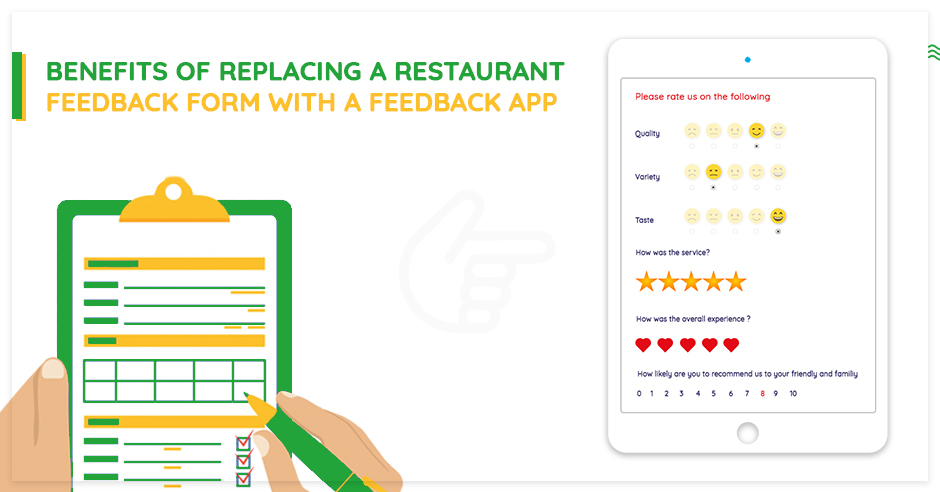Not every customer is going to leave a 5-star review, some might not like the price, taste, or the ambiance at the restaurant. As a business owner, you might be disheartened to see a negative review, especially when you have put in so much effort to create a great dining experience. Dealing with a bad review can be tough, but it’s all part of running a restaurant.
Whether it’s a complaint about the food, service, or ambiance, how you respond can make a big difference. In fact, if handled right, it could actually help your restaurant grow and improve. In this blog, we will explain the best ways to handle bad/negative restaurant reviews and how they affect your business.
The Impact of Customer Reviews on Restaurants
Let’s look at some stats to understand how customer reviews are affecting restaurants.
96% of people consider online reviews as the standard to decide where to eat. 33% of people would not consider eating at a restaurant with less than a 4-star rating. This is why it is important to address negative reviews.
Modern Restaurant Management reveals restaurant businesses can expect a 5 to 9% revenue increase when their online ratings grow by 1-star. This is why it is important to resolve negative feedback and turn into positive restaurant reviews.
Did you know that 67% of customers who left poor reviews are likely to return if they get a quick reply addressing their issue? This is why you should be quick when responding to bad reviews.
5 Best Ways to Respond to Bad Customer Reviews
Responding to bad customer reviews is essential as it can adversely affect the restaurant business. But the most important thing is to know how to reply to negative feedback in the best way possible.3
1. Thank the Reviewers
One thing many restaurant owners (or those responsible for replying to comments) forget is thanking the customers for visiting. You need to show your gratitude towards customers by saying that you appreciate them for taking the time to visit your restaurant.
Make sure to address the customer by their name if possible (on most review sites like Google, Yelp, etc., you can find the names of the people who commented). Avoid using terms like “dear customer” or “dear guest” and try to personalize the response by using their name.
2. Apologize for the Inconvenience
If you are at fault, make sure to apologize. By apologizing, customers will understand that you are taking responsibility for your mistakes rather than dismissing the issue. This will show that you are open to resolving the issue and not arrogant about their negative experience.
Start with “we apologize for the inconvenience you faced at our restaurant” and tell them you will try your best to resolve the core issue as soon as possible. After apologizing, thank them for providing genuine feedback.
3. Address the Issue
Here comes the most important part. Put yourself in the customer’s place and understand how they might have felt and how bad their whole experience was at the restaurant. Understand the problem and explain why it happened.
For instance, let’s imagine that the customer complained about lack of quick attention from the servers. First, you need to check internally about what happened and then explain it to the customer via your response. You can let them know that there weren’t enough servers available at that time, which is why the issue occurred.
Don’t stop at this. Inform them that you are focusing on making sure that there are enough staff in every shift. This way, you can prevent the same issue from arising again.
4. Avoid Being Rude or Defensive
While replying, do not sound defensive, rude, or sarcastic. Try to be humble and stay calm. Use a professional tone and be as understanding as possible while sympathizing with the customer’s negative experience.
Sometimes, you might feel angry when reading negative feedback, especially if they use harsh words or drag irrelevant information. That is why you should never respond to comments when you are consumed by emotions.
5. Invite Them Back
After addressing the issue, you can invite them back. This way, there is a chance to turn their negative experience into a positive one. And who knows, they might become your regular customers.
Inform the customer that you took certain measures to ensure the same problem won’t be repeated and ask them for a second chance. If you want, you can give discounts or other incentives so that they can consider revisiting your restaurant.
Examples on How to Respond to Bad Restaurant Reviews
Now that you know how to reply to the negative feedback, here are some example responses:
Customer review:
I really liked the food quality and the overall ambiance, but what irked me the most was the staff, especially the serves. They noted down our order quickly after we sat at the table but took forever to deliver food. We couldn’t even find staff when we wanted extra glass. After serving our food, they disappeared again and came back only to collect the plates and give us the bill. This entire thing with the staff really spoilt my experience.
Example response 1:
Hi [customer’s name],
Thank you so much for visiting us and sharing your feedback. We sincerely apologize for the inconvenience you experienced during your visit. We understand how frustrating it must have been to wait longer than expected for your meal. After reviewing your comments, we’ve found that we had an unexpected delay in the kitchen due to staffing challenges. We’re actively working on ensuring this doesn’t happen again by improving our workflow. We truly appreciate your understanding and feedback, and we’d love to welcome you back soon. Please let us know if you’d like a special offer on your next visit!
Example response 2:
Dear [customer’s name],
Thank you for taking the time to leave a review. We are truly sorry that we didn’t meet your expectations during your recent visit. We apologize for the slow service you encountered. We’ve looked into the situation, and it seems that we were short-staffed at that time, which caused delays. Rest assured, we are focusing on increasing staff levels during busy periods to prevent this from happening again. We really appreciate your feedback, and we’d love to make things right. Please consider giving us another chance – we’ll ensure a much smoother experience next time!
Wrapping Up
Handling negative reviews with professionalism and empathy is crucial for any restaurant’s success. A thoughtful response can turn a dissatisfied customer into a loyal one, and addressing issues promptly shows that you value feedback and are committed to improvement.
Apologizing, explaining, and inviting customers back can help rebuild trust and demonstrate your dedication to providing excellent service. By focusing on growth and learning from criticism, restaurants can not only recover from negative reviews but also strengthen their reputation, ultimately leading to increased customer loyalty and business success.








